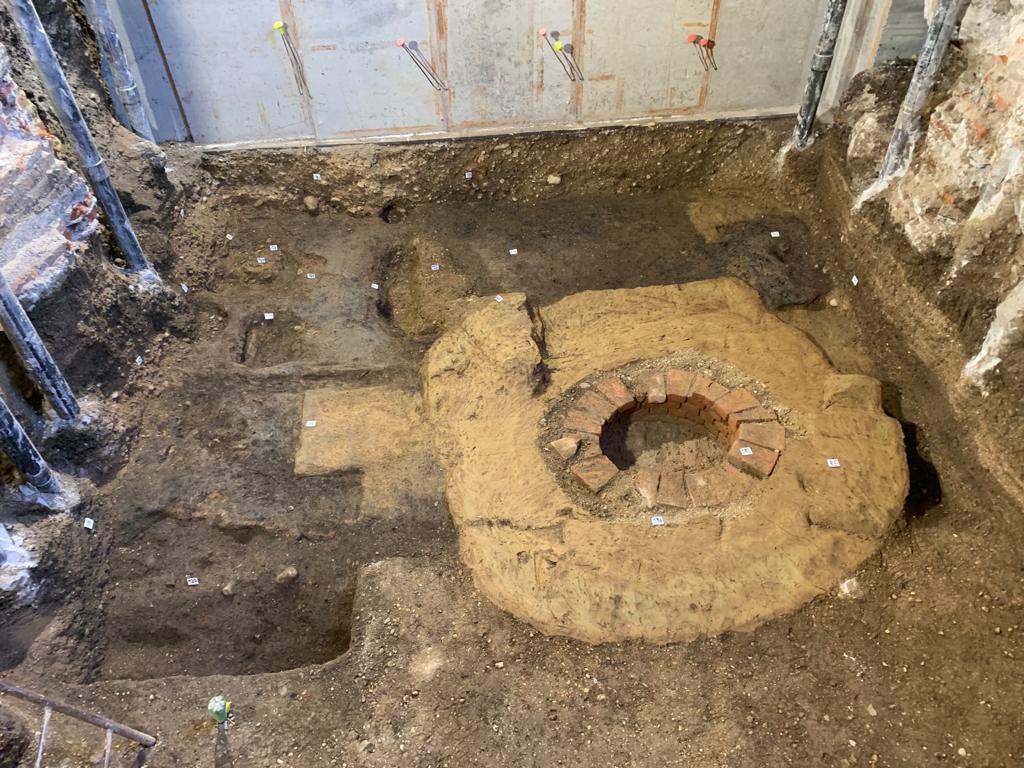Important archaeological discovery in Udine, where several remains ranging from the protohistoric to the modern age, with several relevant new findings, have emerged from the restoration work of Palazzo Dorta, a historic Renaissance building undergoing renovation (it will be converted into a residential building by entrepreneur Alessandro Salvatelli). The excavation is being conducted by the company Arxè s.n.c., led by Giulio Simeoni, under the scientific direction of archaeological officer Giorgia Musina for the Friuli-Venezia Giulia Archaeology, Fine Arts and Landscape Superintendency.
While work was proceeding on the construction of an underground garange, remains attributable to the already known protohistoric fortified village dating back to the 2nd-1st millennium B.C. emerged. Moreover, in the garage area, although no evidence related to the Roman and medieval phases has been found so far, a masonry well dating back to the Renaissance period, about 1.5 meters in diameter, also emerged in recent days. Therefore, in-depth stratigraphic investigation, requested by the Friuli-Venezia Giulia Superintendency and granted by the commission, was necessary because of the exceptional nature of the evidence that has emerged. At the moment, only part of an earthen floor with traces of a probable hearth and structural elements (such as the imprint of a wooden joist) is exposed, but it is likely that the whole can be identified with what remains of a hut, whose exceptional condition of preservation represents a unique finding in the city.
In addition, the archaeological deposit is also returning a good quantity of ceramic fragments, some of which testify to wide-ranging contacts with the Central European area. The study of these finds will make it possible to specify the dating of the identified context. At present, the dwelling structure would seem datable to the Recent Bronze Age, between 1300 and 1200 BC.
“As mayor of Udine and as a Friulian,” commented the first citizen Pietro Fontanini, “I cannot but welcome the news of this important find, which not only confirms the presence in our territory, already from the Bronze Age, of highly evolved populations, as evidenced by the refinement with which the finds are made, but also reveals how already at that time the area represented one of the main commercial hubs at the European level. Now we can only hope that the work will return more surprises.”
The commission has already committed itself to having the excavations continue, which may provide new elements for the correct interpretation of the stratigraphic successions, significant for a greater understanding of the development of the life stages of the protohistoric settlement from which the city of Udine originated. The ongoing conservative restoration works at Palazzo Dorta, which is located, at the foot of the Castle right at the corner of Vicolo Sottomonte overlooking Piazza della Libertà, will lead to the construction of valuable housing units.
 |
| Udine, remains of a protohistoric hut emerge from restoration work on a palace |
Warning: the translation into English of the original Italian article was created using automatic tools. We undertake to review all articles, but we do not guarantee the total absence of inaccuracies in the translation due to the program. You can find the original by clicking on the ITA button. If you find any mistake,please contact us.